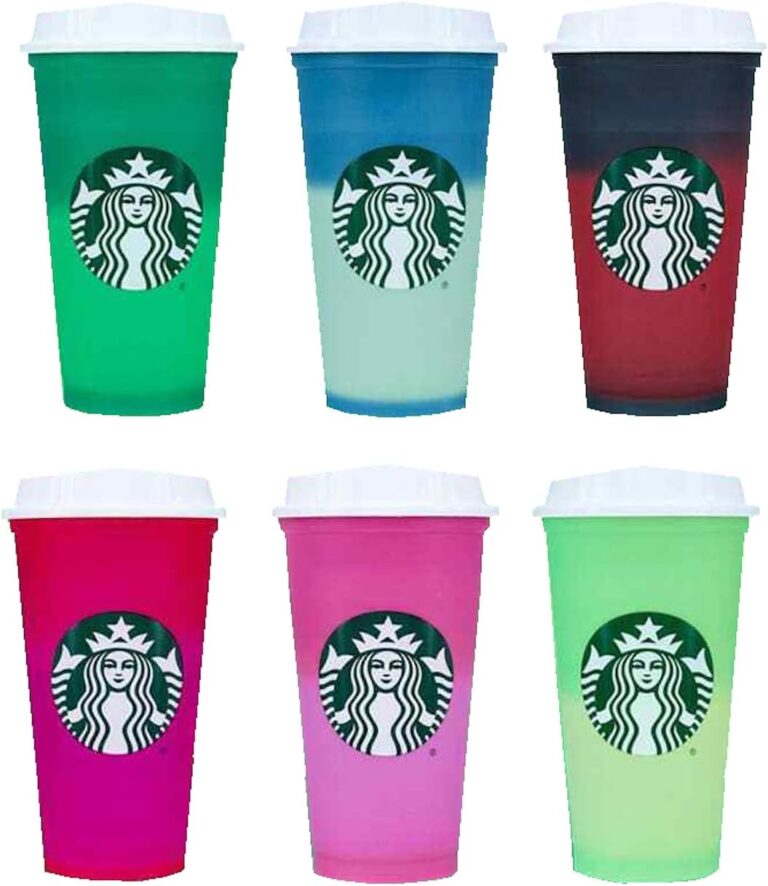Hello there! In this article, we will be discussing the hidden pollution caused by the fashion industry and sharing some startling statistics that will surely grab your attention. We will delve into the environmental impact of textile production, the use of harmful chemicals, and the excessive waste generated by this billion-dollar industry. By the end of this article, you’ll be equipped with a better understanding of the fashion industry’s impact on our planet, and perhaps, be inspired to make more sustainable choices in your own fashion journey. So, let’s dive in and uncover these eye-opening statistics together!
Introduction
Understanding the Fashion Industry’s Impact on the Environment
The fashion industry is often associated with glamour, creativity, and style. However, behind the glitz and glamour lies a hidden crisis that is greatly impacting our environment. The fashion industry is one of the most polluting industries in the world, contributing to various forms of pollution such as waste generation, chemical usage, carbon emissions, and water pollution. It is crucial to unveil the startling statistics surrounding the fashion industry’s impact on the environment and work towards finding sustainable solutions.
The Hidden Pollution Crisis
While fashion is often seen as a means of self-expression and a reflection of societal trends, the hidden pollution crisis behind the scenes is an alarming reality. The entire lifecycle of a garment, from raw material extraction to production, transportation, and disposal, has significant environmental implications. We need to shed light on this crisis to understand the urgent need for change and promote sustainable alternatives.
Importance of Unveiling Startling Statistics
Unveiling the startling statistics of pollution in the fashion industry serves multiple purposes. Firstly, it helps create awareness among consumers, fashion brands, and policymakers about the magnitude of the problem. By understanding the extent of pollution caused by the fashion industry, individuals and stakeholders can make informed decisions and take necessary actions to mitigate its environmental impact. Secondly, unveiling these statistics can serve as a catalyst for change, encouraging industry players and governments to implement sustainable practices and policies. The power of statistics lies in their ability to highlight the urgency for change and inspire collective action.
Fast Fashion’s Environmental Consequences
Massive Production and Consumption Rates
Fast fashion, characterized by rapidly changing trends and low-cost clothing, has revolutionized the fashion industry. However, this model comes at a significant environmental cost. The demand for fast fashion has led to enormous production and consumption rates, resulting in excessive resource extraction, energy consumption, and waste generation. The continuous cycle of producing and consuming cheap clothing has led to overconsumption and a throwaway culture.
Waste Generation and Disposal Challenges
The fast fashion business model promotes a constant turnover of clothing, leading to a staggering amount of waste generation. According to the Environmental Protection Agency (EPA), the average American throws away around 70 pounds of clothing and textiles each year. This waste ends up in landfills, where synthetic materials can take hundreds of years to decompose, releasing harmful toxins into the soil and water.
Chemical Usage and Water Pollution
Chemicals play a crucial role in textile production, but their usage in the fashion industry has significant environmental consequences. From the cultivation of raw materials to dyeing and finishing processes, vast quantities of toxic chemicals are used. These chemicals not only pose a risk to the health of workers but also contaminate water sources, causing water pollution and affecting aquatic life. The World Bank estimates that 20% of industrial water pollution worldwide comes from textile dyeing and treatment.
Carbon Footprint and Climate Change
The fashion industry’s carbon footprint is substantial, primarily driven by its reliance on fossil fuels and energy-intensive production processes. The production of synthetic fibers, transportation of goods, and the energy consumption of factories contribute to greenhouse gas emissions. The United Nations estimates that the fashion industry is responsible for about 10% of global carbon emissions, more than that of all international flights and maritime shipping combined. These emissions contribute to climate change, exacerbating issues such as global warming and extreme weather events.

Pollution in Textile Production Process
Toxic Chemicals in Fiber Production
The fashion industry relies heavily on the production of synthetic fibers such as polyester, nylon, and acrylic. The process of manufacturing these fibers involves the use of toxic chemicals that can have serious health and environmental consequences. These chemicals, including phthalates, formaldehyde, and perfluorinated compounds, can leach into the environment during production and end up in water bodies, affecting ecosystems and human health.
Energy and Water Intensive Processing
Textile production is energy and water-intensive, further exacerbating the fashion industry’s environmental impact. Powering textile factories and processing fibers requires a significant amount of electricity, often sourced from non-renewable energy sources. Additionally, water is extensively used in processes such as washing, bleaching, and dyeing, leading to water scarcity and depletion in regions where textile production is concentrated.
Air and Water Pollution from Dyeing and Printing
The dyeing and printing processes in textile production contribute to air and water pollution. The discharge of untreated wastewater containing dyes and chemicals directly into rivers and streams contaminates water sources and harms aquatic life. Moreover, the release of volatile organic compounds (VOCs) and particulate matter during drying and finishing processes leads to air pollution, contributing to respiratory problems and climate change.
Hazardous Waste Disposal from Finishing
Finishing processes, such as applying chemicals for fabric softening, stain resistance, or wrinkle reduction, generate hazardous waste that requires proper disposal. Chemicals used in finishing can be carcinogenic or toxic to aquatic life. Improper disposal of these wastes can have severe environmental consequences, including soil contamination and the pollution of water bodies.
The Impact of Synthetic Fabrics
Environmental Hazards of Synthetic Fabric Production
The production of synthetic fabrics, including polyester, nylon, and acrylic, has significant environmental hazards. These fabrics are derived from fossil fuels and require large amounts of energy for production. The extraction and refining of fossil fuels contribute to environmental degradation and air pollution. Additionally, synthetic fabrics shed microfibers during washing, contributing to the growing issue of microplastic pollution in our oceans and waterways.
Microplastics and Ocean Pollution
Microplastics, tiny plastic particles less than five millimeters in size, pose a significant threat to marine life and ecosystems. Synthetic fabrics shed these microfibers when washed, and they eventually end up in rivers and oceans. According to research by the International Union for Conservation of Nature (IUCN), 35% of microplastics in the ocean come from synthetic textiles. These microplastics are ingested by marine organisms, eventually entering the food chain and potentially harming humans who consume seafood.
Health Concerns and Endocrine Disruption
The production and use of synthetic fabrics also have health implications. Some synthetic fabrics, such as polyester, contain chemicals that can disrupt the endocrine system, leading to hormonal imbalances and potential health issues. These fabrics also do not allow the skin to breathe, trapping moisture and heat, which can cause skin irritations and allergies.

Supply Chain and Transportation Pollution
Logistics and Packaging Carbon Emissions
The fashion industry’s global supply chains and transportation networks contribute to significant carbon emissions. The long distances traveled by products, whether it’s raw materials or finished garments, involve the burning of fossil fuels. Additionally, the packaging of fashion items, including plastic wraps, hangers, and boxes, also adds to the industry’s carbon footprint. Sustainable packaging initiatives, such as using recycled materials and minimizing unnecessary packaging, are essential to mitigate transportation-related emissions.
Air Pollution from Transportation Modes
The transportation of fashion goods relies heavily on air, sea, and land modes, all of which have environmental implications. Air transport, although relatively fast, has the highest carbon emissions per kilometer, contributing to air pollution and climate change. The emissions from shipping, both via cargo vessels and trucks, also have adverse effects on our environment. Opting for more sustainable transportation options, such as using renewable energy-powered vehicles and optimizing supply chain logistics, can help reduce pollution and emissions.
Environmental Impact of Global Supply Chains
The fashion industry’s global supply chains encompass not only the transportation of goods but also the sourcing of raw materials. Many raw materials, such as cotton and leather, are associated with deforestation, water scarcity, and ecosystem depletion. These environmental consequences highlight the need for sustainable sourcing practices, including the use of organic and recycled materials and supporting fair trade initiatives.
Consumer Behavior and Waste
Fast Fashion Consumption Culture
The rise of fast fashion has fueled a culture of consumption where clothing is treated as disposable, leading to wasteful habits and overconsumption. Inexpensive clothing items and frequent turnover of trends encourage consumers to purchase more than they need, which contributes to resource depletion and waste generation. Educating consumers about the impact of their choices and promoting a shift towards more conscious consumption habits is crucial to reduce waste in the fashion industry.
Impulse Buying and Overconsumption
Impulse buying is a common behavior among consumers, driven by the constant influx of new fashion trends and sales promotions. This behavior often leads to the accumulation of unworn clothing, resulting in excessive waste. Additionally, overconsumption also leads to inadequate usage of existing clothing, contributing to the perceived need for constant clothing purchases. Encouraging mindful purchasing decisions, such as investing in quality garments and embracing sustainable practices like clothing swaps, can reduce the negative impact of consumer behaviors.
The Issue of Disposed Clothing
Disposal of clothing is a significant concern, as it often ends up in landfills rather than being recycled or reused. Fast fashion’s low-quality garments are more likely to wear out quickly and end up as waste. Synthetic fibers, in particular, take a long time to decompose, further exacerbating the environmental impact. Creating infrastructure for clothing recycling and promoting designs that enable easy disassembly and recycling are essential to reduce clothing waste.
Limited Recycling and Donation Options
While the concept of recycling and donating clothing is gaining popularity, there are still limitations to its implementation. Recycling technologies for clothing are not as advanced compared to other materials, making it challenging to recycle certain fabrics. Additionally, limited donation options or lack of awareness about where to donate clothing often leads to garments being discarded instead. Expanding recycling capabilities and increasing accessibility to donation centers can help divert clothing from landfills and foster a more circular fashion economy.
Slow Fashion and Sustainable Alternatives
Understanding Slow Fashion Concepts
Slow fashion is an alternative to the fast fashion industry, emphasizing a more sustainable and ethical approach to clothing production and consumption. It encourages mindful purchasing decisions, investing in high-quality garments, and supporting ethical and transparent supply chains. Slow fashion recognizes the value of craftsmanship and durability, promoting a shift away from disposable fashion towards more timeless and enduring pieces.
Sustainable Materials and Production Practices
Promoting sustainable materials and production practices is crucial for reducing the fashion industry’s environmental impact. Sustainable materials include organic cotton, hemp, linen, and recycled fabrics. These materials require fewer resources, emit fewer greenhouse gases, and have a lower impact on water sources compared to conventional materials. Sustainable production practices involve minimizing waste, using eco-friendly dyes and chemicals, and implementing energy-efficient processes.
Promoting Circular Economy and Upcycling
A circular economy approach aims to keep materials and products in use for as long as possible, reducing waste and resource consumption. In the fashion industry, this can be achieved through practices such as upcycling, where discarded garments are transformed into new products with added value. Upcycling promotes creativity, reduces the need for new materials, and extends the lifespan of clothing items.
Ethical and Fair Trade Fashion Movements
Ethical and fair trade fashion movements focus on creating sustainable and equitable conditions for workers throughout the fashion supply chain. This includes fair wages, safe working conditions, and responsible sourcing of materials. By supporting ethical and fair trade brands, consumers can contribute to a more sustainable fashion industry that respects both human rights and the environment.
Government and Industry Responsibility
Regulation and Policy Measures
Government regulations and policies have a crucial role to play in curbing pollution in the fashion industry. Implementing regulations that limit the use of hazardous chemicals, reduce carbon emissions, and encourage sustainable sourcing can drive significant change. Providing incentives for sustainable practices and imposing penalties for non-compliance can also encourage industry players to adopt more environmentally responsible approaches.
Encouraging Sustainable Fashion Practices
Governments can support sustainable fashion practices by providing financial support, grants, and tax incentives to brands that demonstrate a commitment to reducing their environmental impact. By actively promoting sustainable fashion initiatives and collaborating with industry stakeholders, governments can create an enabling environment for positive change.
Supporting Innovation and Research
Investing in research and innovation is crucial for developing sustainable solutions in the fashion industry. Governments can support research projects focused on sustainable materials, textile recycling technologies, and cleaner production processes. By providing funding and resources, governments can help accelerate the transition towards a more sustainable fashion industry.
Collaboration for a Greener Future
Government-industry collaborations are essential to address the pollution crisis in the fashion industry effectively. By working together, governments and industry stakeholders can jointly devise strategies and action plans to reduce pollution, improve supply chain transparency, and promote sustainable fashion practices. Collaboration can also include sharing best practices, conducting joint research projects, and establishing industry-wide sustainability standards.

Educating and Raising Awareness
Role of Education in Sustainable Fashion
Education plays a crucial role in creating a sustainable fashion industry and cultivating informed consumers. Educational institutions can incorporate sustainability modules into fashion-related courses to raise awareness among future designers and industry professionals. This will equip them with the knowledge and skills necessary to make sustainable choices and develop innovative solutions.
Awareness Campaigns and Consumer Education
Raising awareness among consumers through targeted awareness campaigns and education initiatives is essential. These campaigns can highlight the environmental impact of the fashion industry and the importance of making sustainable choices. Consumer education can include information on sustainable materials, responsible purchasing practices, and the benefits of repairing and upcycling clothing.
Fashion Industry Influence in Shaping Opinions
The fashion industry has significant influence over consumer behavior and societal trends. By embracing sustainability and promoting eco-friendly practices, the industry can shape public opinion and drive positive change. Fashion brands can lead the way by adopting sustainable practices, showcasing sustainable collections, and encouraging other industry players to join the movement.
Building a Conscious Consumer Base
Empowering consumers to make informed choices and supporting sustainable brands is vital for building a conscious consumer base. By providing transparent information about their supply chain, materials used, and environmental initiatives, brands can help consumers make sustainable purchasing decisions. Engaging with consumers through social media, events, and interactive platforms can also foster a community of conscious consumers.
Conclusion
Recognizing the urgency for change is crucial in addressing the hidden pollution crisis in the fashion industry. Startling statistics shed light on the environmental impact of the fashion industry, from waste generation and water pollution to carbon emissions and microplastic pollution. It is important to acknowledge the collective responsibility of individuals, fashion brands, governments, and institutions in working towards a sustainable fashion industry.
Taking action towards a cleaner future requires a multi-faceted approach. This includes promoting slow fashion and sustainable alternatives, supporting ethical and fair trade movements, implementing regulations and policies, supporting innovation and research, educating and raising awareness, and fostering collaboration among stakeholders. By collectively addressing the hidden pollution in the fashion industry, we can pave the way for a more sustainable and environmentally responsible future.












